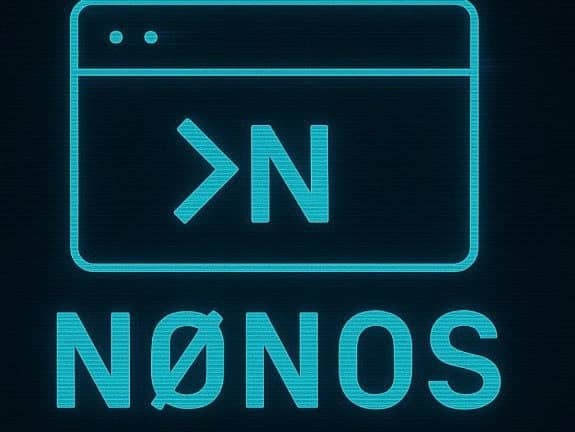订阅 wiki
Share wiki
Bookmark
NØNOS
NØNOS
NØNOS 是一个完全用 Rust 编程语言从头构建的无需信任的操作系统,其设计重点是安全性、隐私性和模块化。该系统完全在 RAM 中运行,并通过 Anyone SDK 集成了匿名网络功能。[1]
概述
NØNOS(非操作系统)是一个完全用 Rust 构建的计算系统,旨在优先考虑零信任安全性和内存安全。通过避免使用 C 和 C++ 等传统语言,它通过编译时安全性和形式验证消除了常见的漏洞,例如缓冲区溢出。它完全在 RAM 中运行,限制了持久存储,并需要使用加密方法来保存数据,从而减少了潜在的攻击面。
该架构集成了以隐私为中心的功能,包括加密路由、匿名网络以及针对流量分析和元数据泄漏的保护。所有进程都需要加密验证才能运行,并且网络流量通过加密网格路由以模糊用户身份。该系统支持 Web3 交互,同时保持设备匿名性,从而可以无缝集成 区块链,而不会暴露用户数据。
NØNOS 将名为 ZeroState 的无盘可启动环境与云管理层相结合,形成一个双层系统,专为高安全性和去中心化而设计。它结合了基于代币的治理来支持经济可持续性,并被定位为用户拥有的传统基础设施模型的替代方案。[2]
架构
NØNOS 架构基于几个核心原则和组件,这些原则和组件协同工作以创建安全且私密的计算环境。[3]
Rust 微内核
NØNOS 的基础是一个完全用 Rust 编写的微内核,不包含任何 unsafe 代码块。这提供了内存安全性的编译时保证,这是系统安全的关键特性。内核采用基于能力的安全性模型,其中进程被授予特定的、有限的权限,并且所有系统调用 (syscall) 都被隔离和身份验证。该组件充当整个操作系统的加密信任根。[3]
ZeroState 运行时
NØNOS 的一个关键特性是其常驻 RAM 的操作,称为 ZeroState。整个操作系统,包括所有模块和运行时进程,都完全保存在系统内存中。这种无盘执行环境意味着除非明确指示,否则不会将任何数据写入持久存储。该系统设计为可直接从 UEFI 固件启动,将操作系统加载到 RAM 中并在那里管理其状态。这种方法通过确保系统在重新启动时返回到干净、经过验证的状态来增强安全性。[3]
匿名网络
来自 NØNOS 操作系统的所有网络通信都通过 Anyone SDK 路由。此集成提供了对匿名、加密的网状网络的访问。通信经过设备身份验证,并且系统利用 零知识证明 进行身份验证,从而实现私密交互,而不会暴露敏感信息,例如 IP 地址。路由是临时的,进一步增强了用户隐私。[3]
模块化沙盒系统
NØNOS 对其应用程序和系统组件使用模块化设计。应用程序被打包为沙盒化的 .mod 二进制文件,这些文件在隔离的执行上下文中运行。这些模块通过安全的进程间通信 (IPC) 通道相互通信并与内核通信。这种架构可以通过可插入的内核模块和应用程序添加新功能,而不会影响核心系统的完整性。[3]
NØNOS 代币
$N0NOS 代币是 NØNOS 生态系统中的核心 实用 资产,可用于访问关键协议功能。用户可以质押代币来运营加密中继基础设施、发布经过验证的模块或部署 去中心化应用程序。它还可以用作微服务的支付方式,例如加密消息传递和零知识私有 测试网。
开发人员因贡献批准的模块而获得 $N0NOS 奖励,这些奖励来自贡献者金库。插件经济允许开发人员通过基于使用情况的定价来货币化模块,收入在贡献者 (60%) 和协议金库 (40%) 之间分配。这种结构为开源贡献创造了激励,同时支持生态系统的运营资金。
代币经济学 模型旨在通过激励结构和自动化机制解决开源软件中的可持续性挑战。这些包括数学奖励算法、动态收入共享模型、通货紧缩 销毁 机制、二次方治理投票系统和 质押 优化算法。它们共同旨在防止志愿者倦怠,并实现跨链的长期、可扩展的开发。[1] [2]
代币经济学
NØNOS 的总供应量为 8 亿个代币,其分配如下:
- 公开流通:70%
- 协议储备:30%
- 已销毁:20%
治理
NØNOS 协议的治理由 Builder DAO 处理,Builder DAO 是一个 去中心化自治组织,它通过与链上活动相关的注册表来协调贡献者的参与。开发人员通过诸如 GPG 签名的代码提交之类的操作而不是个人身份来识别,从而可以进行匿名贡献跟踪。
DAO 中的投票采用二次方模型,旨在与传统的基于代币的投票系统相比,更公平地分配影响力。贡献者根据他们在项目中的活动获得更高的投票权,并且提案必须满足法定人数阈值才能通过多重签名流程执行。
治理结构旨在根据经过验证的贡献而不是集中控制来分配决策权,从而使项目所有权与积极参与保持一致。[1]
合作伙伴
- DeBros
- PAAL AI
- MAXKO
- DeGenerousDAO
发现错误了吗?
